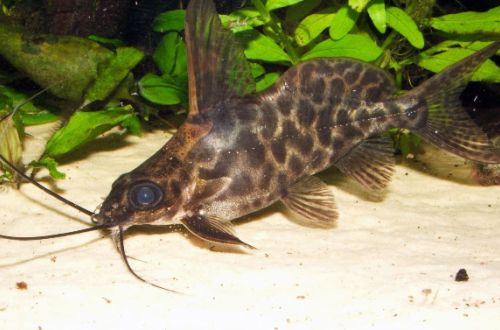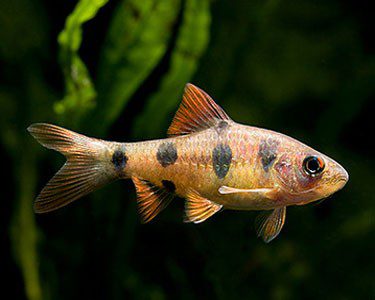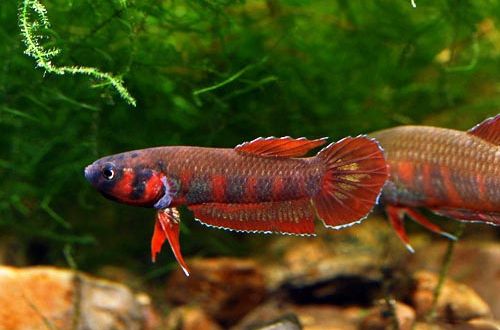
Synodontis Alberta
Synodontis Alberta, Highfin Synodontis or Bigeye Synodontis, scientific name Synodontis alberti, belongs to the Mochokidae family. Most active at night, in a community tank it will remain hidden during the day. Such a hidden lifestyle is unlikely to make it the center of attention in the aquarium, so Synodontis often only complements the existing community of fish. Moreover, he has a peaceful disposition and perfectly adapts to various conditions.

Contents
Habitat
It comes from the vast basin of the Congo River in the territory of the modern states of the Democratic Republic of the Congo, Cameroon and the Republic of the Congo. It lives in numerous streams and tributaries, rarely in the main riverbed. Prefers regions with dense vegetation and shelters from submerged snags, branches and tree roots.
Brief information:
- The volume of the aquarium – from 80 liters.
- Temperature – 21-25°C
- Value pH — 6.0–8.0
- Water hardness – soft to hard (5-25 dGH)
- Substrate type – sandy, soft
- Lighting – subdued or moderate
- Brackish water – no
- Water movement – light or moderate
- The size of the fish is up to 20 cm.
- Nutrition – any drowning
- Temperament – peaceful
- Keeping alone or in a group in the presence of shelters
Description
Adults reach a length of up to 20 cm. It is distinguished by a brown-marble body pattern and very long antennae in comparison with other Synodontis. Large eyes indicate a midnight lifestyle, the catfish sees perfectly in the twilight. The spotted coloration is most clearly expressed in juveniles, with age it is retained only in males, females noticeably fade.
Food
In the wild, algae make up a significant part of the diet, so in a home aquarium it is advisable to feed food (flakes, granules, tablets) with herbal supplements in the composition. In addition to dry food, he will also accept live and frozen foods, such as bloodworms. The main condition is that the food must be sinking.
Maintenance and care, arrangement of the aquarium
The optimal volume of the tank for one fish starts from 80 liters. The design uses a soft sandy substrate, several shelters in the form of snags or other decorative elements, and dense thickets of rooted plants. Decor items made of natural wood, specially prepared for use in an aquarium, can serve as a place for the natural growth of algae, which will serve as an additional source of food. The lighting is subdued, plants floating on the surface can serve as an additional means of shading. It is worth noting that the level of illumination can be any, however, in bright light, the catfish will often be in shelter and leave it only at night.
When keeping, special attention should be paid to the cleanliness of the soil, it is worth regularly cleaning it from organic waste, otherwise there is a high risk of infection of the antennae in an excessively silted substrate.
Behavior and Compatibility
Big-eyed Synodontis has a peaceful and calm disposition, so it will not cause problems to other inhabitants of the aquarium. Pairs well with other non-aggressive medium sized fish. For small fish (up to 3 cm in length) there is a chance of being accidentally eaten, but this is not a sign of predation on the part of the catfish, but its promiscuity in food, characteristic of most catfish.
It can be kept both singly and in a group of its relatives; no intraspecific conflicts were noted.
Breeding / breeding
Cases of successful breeding of Synodontis Alberta in the home aquarium are rare. Catfish fry are commercially available mainly from commercial fish farms.
Fish diseases
The main cause of most diseases is unsuitable living conditions and poor-quality food. If the first symptoms are detected, you should check the water parameters and the presence of high concentrations of hazardous substances (ammonia, nitrites, nitrates, etc.), if necessary, bring the indicators back to normal and only then proceed with treatment. Read more about symptoms and treatments in the Aquarium Fish Diseases section.




